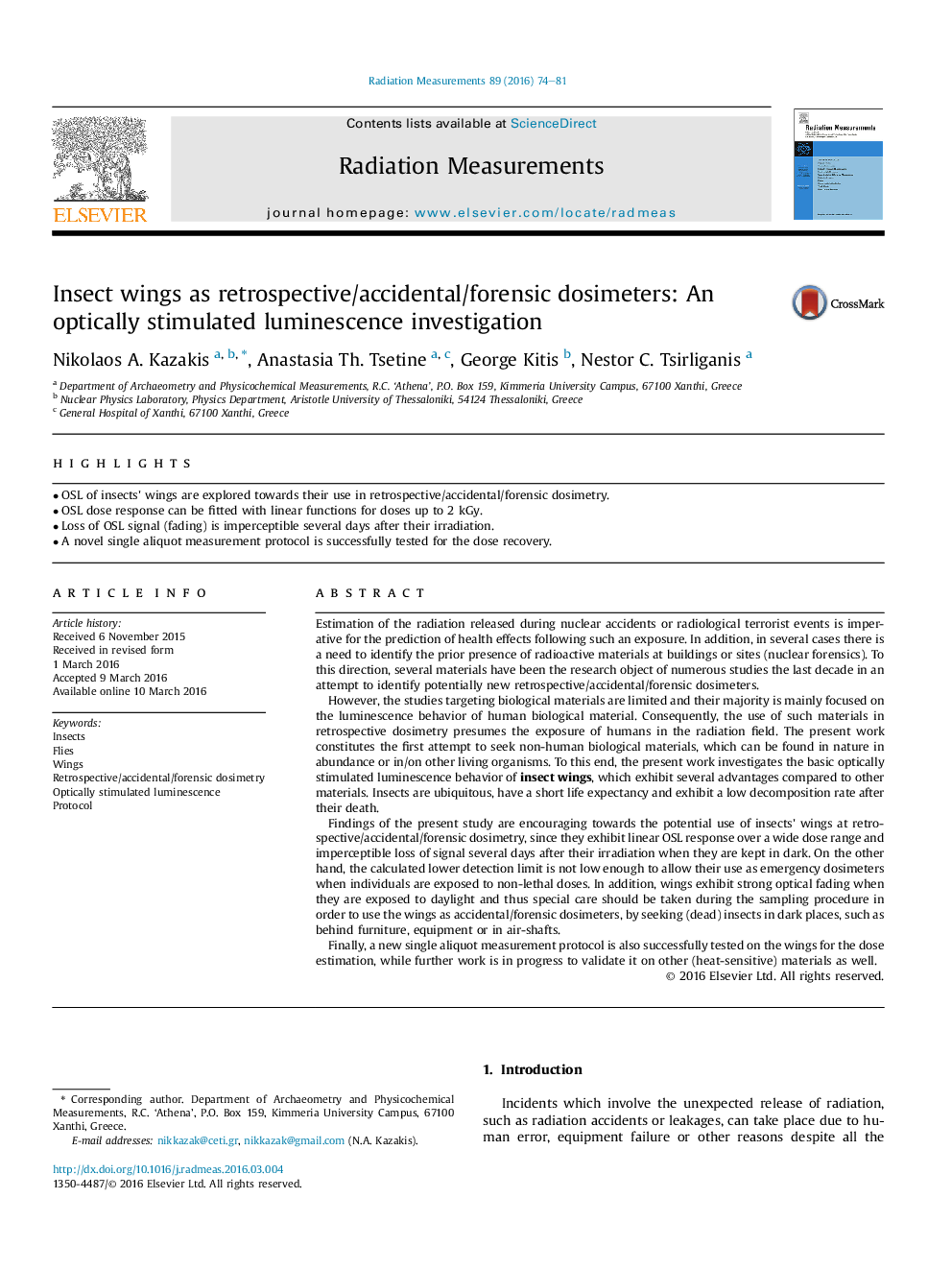| کد مقاله | کد نشریه | سال انتشار | مقاله انگلیسی | نسخه تمام متن |
|---|---|---|---|---|
| 1884401 | 1533401 | 2016 | 8 صفحه PDF | دانلود رایگان |
• OSL of insects' wings are explored towards their use in retrospective/accidental/forensic dosimetry.
• OSL dose response can be fitted with linear functions for doses up to 2 kGy.
• Loss of OSL signal (fading) is imperceptible several days after their irradiation.
• A novel single aliquot measurement protocol is successfully tested for the dose recovery.
Estimation of the radiation released during nuclear accidents or radiological terrorist events is imperative for the prediction of health effects following such an exposure. In addition, in several cases there is a need to identify the prior presence of radioactive materials at buildings or sites (nuclear forensics). To this direction, several materials have been the research object of numerous studies the last decade in an attempt to identify potentially new retrospective/accidental/forensic dosimeters.However, the studies targeting biological materials are limited and their majority is mainly focused on the luminescence behavior of human biological material. Consequently, the use of such materials in retrospective dosimetry presumes the exposure of humans in the radiation field. The present work constitutes the first attempt to seek non-human biological materials, which can be found in nature in abundance or in/on other living organisms. To this end, the present work investigates the basic optically stimulated luminescence behavior of insect wings, which exhibit several advantages compared to other materials. Insects are ubiquitous, have a short life expectancy and exhibit a low decomposition rate after their death.Findings of the present study are encouraging towards the potential use of insects' wings at retrospective/accidental/forensic dosimetry, since they exhibit linear OSL response over a wide dose range and imperceptible loss of signal several days after their irradiation when they are kept in dark. On the other hand, the calculated lower detection limit is not low enough to allow their use as emergency dosimeters when individuals are exposed to non-lethal doses. In addition, wings exhibit strong optical fading when they are exposed to daylight and thus special care should be taken during the sampling procedure in order to use the wings as accidental/forensic dosimeters, by seeking (dead) insects in dark places, such as behind furniture, equipment or in air-shafts.Finally, a new single aliquot measurement protocol is also successfully tested on the wings for the dose estimation, while further work is in progress to validate it on other (heat-sensitive) materials as well.
Journal: Radiation Measurements - Volume 89, June 2016, Pages 74–81
